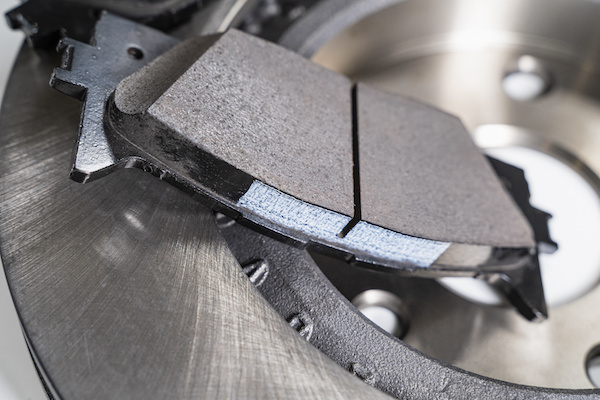
When it comes to the braking system of a car, brake pads are an essential component. The caliper, the brake pads, and the rotor all play a role in disc brakes' proper operation. The rotor is held in place by the caliper's brake pads, which are located within the caliper. To stop the wheel, friction on the rotor wears away at the brake pads over time. Brake pads are divided into four following categories:
Semi-metallic
Semi-metallic brake pads contain approximately 30% to 65% metal. Materials like steel wool, wire, and copper might be added. These components are then joined by an organic resin. They are then shaped and fired in a furnace to increase their durability. One of Semi-Metallic's great advantages is their toughness.
They withstand heat better and are gentler on rotors than ceramic pads. They are cheaper, and when there is about 60% metal in them, they can handle hard braking for a long time. Semi-Metallic brake pads are ideally designed for high-performance vehicles. This is the option for a car that can go from 0-60 mph in seconds. As with every pad, there are drawbacks, in this case, adverse responses to extremely cold temperatures.
Ceramic
Ceramic brake pads are by far the most expensive option and are likely to be found on a supercar. Why the price? In fact, they are great brakes, absorbing heat from even the most brutal stops. These pads are made of ceramic fibers and comparable fill materials, making them cleaner and quieter than others. They also outlast organic pads in terms of durability. The time it takes to get them up to operating temperature is a considerable disadvantage. So although ceramic pads are perfect for rallying, they are useless in a vehicle that seldom reaches optimal performance temperatures on daily commutes or shopping trips.
Low-Metallic (NAO)
The Low-Metallic NAO alternative has better breaking since it uses an organic compound blended with 10% to 30% copper or steel. Heat may be transferred more easily with this formula. However, because of the additional metal, they are loud and may produce a lot of dust.
Non-Asbestos Organic
The name implies that these brake pads are mostly organic. Not always. The mineral asbestos was used to make pads until safety hazards forced its replacement. Newer versions may use fibre glass, rubber, Kevlar, as well as polymers like cellulose. Contrary to popular belief, Non Asbestos Organic brake pads wear quickly and are only appropriate for daily use. Moreover, they are not suited to frequent stopping. This option has fewer downsides than the Kevlar one.
For quality brake pad replacements in San Mateo, CA, please call or visit Four Car Garage soon!